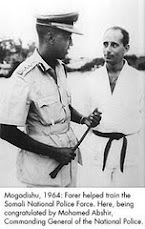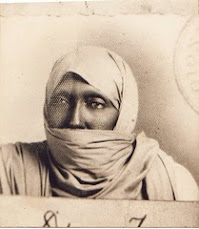 MV Irene E.M. was hijacked at approximately 2200 UTC on 13 April and confirmed via late reporting at 0700 UTC on 14 April. The ship appears to be transiting to Somalia coast near Dhurbo. ON 10 April two Egyptian fishing vessels were hijacked next to RAS KAMPONI, Bossaso. During the course of the Easter weekend, there have 5 piracy incidents including one hijacking (Tug BUCCANEER). On 10 Apr, the MT BOW ASIR was released, after the owners paid a reported 2.4 million US dollars in ransom. Also on 10 Apr, the French yacht TANIT was freed after the intervention of French military forces. Two pirates were captured and three detained during the operation. Unfortunately the owner of the yacht’s who was on board was also killed. On 12 Apr, the US-flagged MV MAERSK ALABAMA was officially freed. Although the crew had previously regained control of the ship, the pirates had escaped in the MV’s lifeboat, taking the MV’s captain with them. He was freed when US Navy SEALS shot and killed the 3 pirates on board the lifeboat. One pirate was detained during the operation.
MV Irene E.M. was hijacked at approximately 2200 UTC on 13 April and confirmed via late reporting at 0700 UTC on 14 April. The ship appears to be transiting to Somalia coast near Dhurbo. ON 10 April two Egyptian fishing vessels were hijacked next to RAS KAMPONI, Bossaso. During the course of the Easter weekend, there have 5 piracy incidents including one hijacking (Tug BUCCANEER). On 10 Apr, the MT BOW ASIR was released, after the owners paid a reported 2.4 million US dollars in ransom. Also on 10 Apr, the French yacht TANIT was freed after the intervention of French military forces. Two pirates were captured and three detained during the operation. Unfortunately the owner of the yacht’s who was on board was also killed. On 12 Apr, the US-flagged MV MAERSK ALABAMA was officially freed. Although the crew had previously regained control of the ship, the pirates had escaped in the MV’s lifeboat, taking the MV’s captain with them. He was freed when US Navy SEALS shot and killed the 3 pirates on board the lifeboat. One pirate was detained during the operation.Click here for a full size version of this slide.Click here to view the piracy update.
Pirates' map
The successful rescue of US captain from Somali pirates is just the latest incident in the region. To keep tabs on international piracy, check out this real-time map
 from the International Chamber of Commerce.
from the International Chamber of Commerce.Despite the dramatic end to the hostage situation of US captain Richard Phillips over the weekend, officials say that this will most likely cause an escalation in violence between Somali pirates and their captives. Up until now there had been little loss of life as most of the captives were returned unharmed after ransoms were paid. Some of those ransoms were unbelievably large, such as the $3m paid for the Saudi supertanker Sirius Star, but it did mean little loss of life.
Piracy seems like a problem from the past, not a foreign policy challenge of the present. But this map from the International Chamber of Commerce shows how many incidents of piracy there have already been in 2009 and how widespread the problem is. Go to their site to see most recent updates and zoom in on specific regions such as the Gulf of Aden where Somali pirates are operating.
This is a great example of how a map can explain trends. We've already seen some of information in the DataStore used to create maps, such as Tony Hirst's maps comparing MP's expenses claims. Tony has a great tutorial on how he created the maps and charts.
Kevin Anderson
guardian.



.jpg)












No comments:
Post a Comment